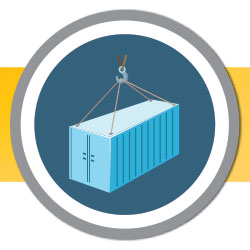
Over the past three quarters, rising costs for labor, capital and the impact of tariffs have curtailed growth for small and midsize businesses in Wisconsin and across the nation.
A major factor of slower growth is the immediate impact tariffs have on the costs of raw materials, packaging and goods. Small and midsize businesses have less negotiating leverage than larger companies.
In the Q3 2018 Vistage CEO Confidence Index survey, 52 percent of CEOs said the tariffs that took effect last year have hurt them. The findings also showed that the manufacturing, wholesale trade and construction industries have been hardest hit by tariffs.
In the same survey, 63 percent of Wisconsin CEOs said they were strongly or moderately affected, 11 points higher than the national average. This increase is likely driven by the fact that the majority of survey respondents from Wisconsin were from those industries hit hardest.
Our research also showed that 59 percent of Wisconsin CEOs plan price increases in the next 12 months. To better understand what small and midsize businesses are doing to mitigate cost increases, I spoke with three Vistage members who shared tips to consider if you’re managing the impact of tariffs on your business.
Be transparent
- Arm your customers with the right information. Skolnik Industries, a Chicago-based manufacturer of steel drums, has backed up its price increases with news and data about the rising cost of steel. Each week, the company sends customers a list of steel prices published in CRU, the leading steel benchmark in the U.S. market, as well as articles about tariffs from reputable publications such as the Wall Street Journal.
- Be forthcoming with what’s happening – and why. i2 Construction in Denver tries to serve as a trusted advisor to its customers, and that means being upfront about issues like price increases. Talking about higher prices has helped the company build better relationships with clients.
- Don’t take advantage of the situation. River of Goods, a custom home décor products and furnishings chain and Terrybear Urns & Memorials, both based in St. Paul, Minnesota, have made sure that any proposed price increases have been reasonable and fair to their distributors.
- Raise your prices gradually. Out of consideration for customers, Skolnik Industries has raised prices incrementally over five months, hoping that this will make it easier for clients to adjust to higher costs.
Plan to negotiate
- Treat each case individually. Even though every customer was expected to share the price increase, River of Goods has tried to approach each customer individually and developed specific programs to address the needs of each.
- Negotiate on issues besides price. One of i2 Construction’s clients had a project increase by $35,000 almost overnight. Instead of scrapping the job, i2 helped the client work with a millworker and an architect to find an alternative option that met the client’s budget.
- Know your limits. Of all the raw materials Skolnik Industries uses to create steel drums, 90 percent is American-made steel. Since last year, the price of that steel has increased about 25 percent, leaving the company with no option but to pass on the price to customers.
Remain nimble
- Make educated guesses. When it comes to stocking inventory for 2019, River of Goods and Terrybear Urns & Memorials are planning for the worst while hoping for the best. Depending on the product category, these companies are making inventory purchases based on the assumption that their sales will be equal to, or less than, sales in 2018.
- Create a buffer for a worst-case scenario. In some cases, Skolinik Industries is receiving estimates from contractors that are only good for seven days. To cope with this uncertainty, it is building in a price buffer that serves as a safety net in case prices keep going up.
- Scrutinize your costs. While coping with the rising cost of steel, i2 Construction must deal with price increases across a range of other goods and services, from shrink wrap to freight shipping. To manage those increases, is is taking a critical eye to costs while being prudent with spending.